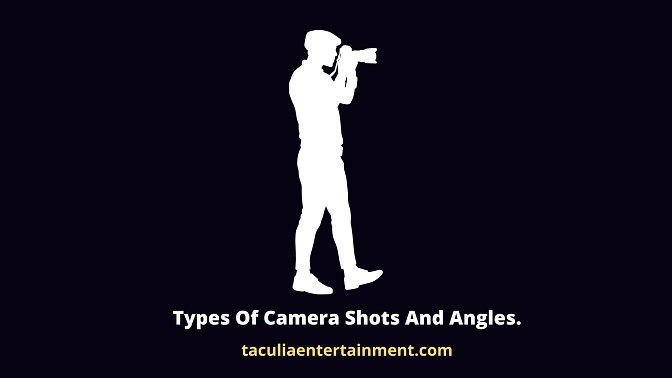
In this article, I am going to reveal to you the types of camera shots and angles that you can use for all your video shootings, whether films, music videos, comedy skits etc.
This camera shots and angles are going to be divided into 3 categories and they are:
- Shot sizes.
- Camera angles
- Motion or camera movements.
1. Shot sizes.
The shot sizes we have are:
- Close up
- Extreme close up
- Long shot
- Extreme long shot
- Medium or mid shot.
- POV (Point of view).
1. Close up
This type of shot size is used when you are trying to draw the viewers attention to expression on an artists face.
2. Extreme close up
This is the variation of the close up shot where you will have to chop off the bottom of the artists face for the purpose of getting more closer.
3. Long shot
Long shot is used when you are trying to reveal the entire body of the subject and establish a sense of location.
OIt is also used to cover actions and to see bodies in motion.
4. Extreme long shot
Extreme long shot makes the subject smaller or relative to the frame.
You can use it to make the subject look smaller in relation to their surroundings.
5. Medium or mid shot.
Medium shot reveals almost half of the subject.
You may use this shot when someone is holding something or using something or if the body language is still important but the subject does not have to be mobile.
6. POV (Point of view).
In this type of shot, the camera points to what a viewer is looking at.
You can use it to make the audience feel as if they are the person making the view.
2. Camera angles.
The camera angles we have are:
- Eye level
- Low angle
- High angle
- Top angle
- Dutch angle
- Over the shoulder.
1. Eye level
In this type of shot angle, the camera points straight ahead.
You can use this shot angle to remain objective, and not try to manipulate the situation.
2. Low angle
In this type of shot angle, the camera points up from a lower angle.
You can use this type of shot angle to manipulate a situation, and also to make subjects appear bigger or more dominating.
3. High angle
In this type of shot angle, the camera points down from a high angle.
You can use it to make the subjects look dominating and weak.
4. Top angle
This type of shot angle uses the birds eye view.
You can use it when you want to show the topography of a location.
5. Dutch angle
Also called the tilted shot. It is the type of shot angle where the camera is not really levelled.
You can use it to draw attention to the fact that it is not about the frame, that something is literally off tilture.
6. Over the shoulder.
This is a specialized shot.
In this type of shot angle, you will have one person facing off with another person.
Now let’s move on to the next category of camera shots and angles which is the motion or camera movements.
3. Motion or camera movements.
Below are the different motions or camera movements we have:
- Pan or tilt.
- Track, dolly and crane.
- Zoom
- Random motion
- 360 degree.
1. Pan or tilt.
During this type of camera movement, the camera stays one place and goes left or right as if someone is observing a tennis match.
It is going to make the audience feel as if they are watching something objectively from a distance.
2. Track, dolly and crane.
This kind of camera movement is used when you are trying to move with the subject.
Track is going to move sidewards by the left or right.
Dolly will love from front or back.
Crane is going to go up and down.
3. Zoom
Zoom is a variation of the dolly shot, and you can use a zoom lens when you don’t want to enter or leave the space.
In this kind of camera movement, all you want to do is to get closer without making an emotional statement.
4. Random motion
In a random motion, the camera will shake at certain points in a random manner.
This kind of camera movement is typically used to provide motion or energy to a shot to make it come alive.
5. 360 degree.
In this type of camera movement, the camera simply moves around the subject.
Click Here To Advertise Your Business With Us


